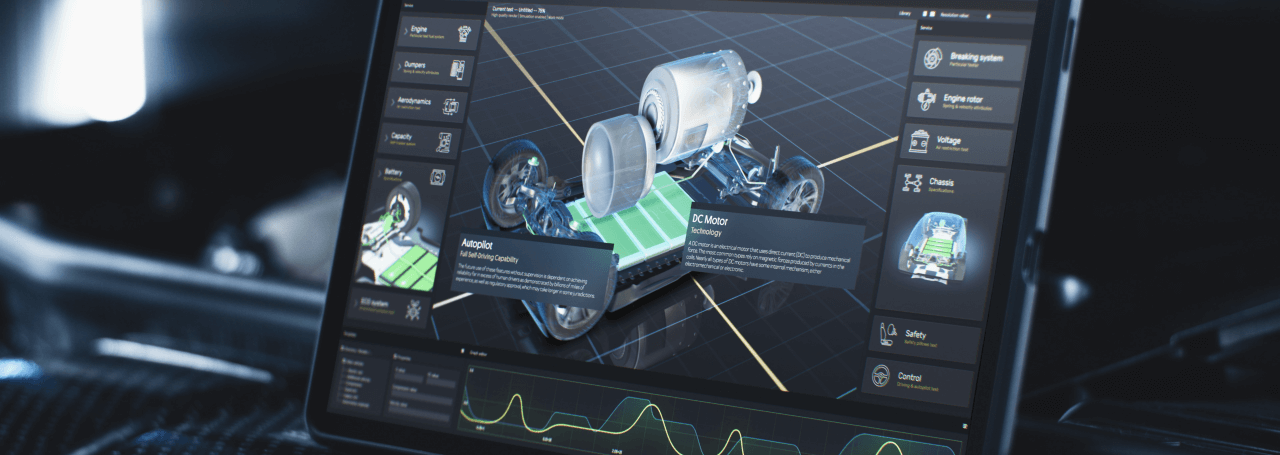- Discovering the Magic of 3.5 Inch Displays: Size and Application
- Introduction to 3.5 TFT LCD
- Display Size – Optimal Balance of Portability and Usability
- 3.5 inch Display Technical Specifications
- Applications and Use Cases
- Sourcing Considerations
- Riverdi – A Commitment to Excellence
- The Bottom Line
- Conclusion
- FAQ on LCD Displays for Electronic Device Design
Discovering the Magic of 3.5 Inch Displays: Size and Application
Introduction to 3.5 TFT LCD
3.5-inch displays offer a compelling form factor for integration into industrial equipment. Their compact size makes them well-suited for portable handheld devices, while still providing sufficient screen real estate for data monitoring and interaction. In this post, we’ll explore the benefits of 3.5-inch intelligent displays for industrial use cases and discuss technology considerations for engineering and project development.
Display Size – Optimal Balance of Portability and Usability
A key advantage of 3.5-inch displays in industrial contexts is the balance they strike between portability and usability. At 3.5 inches measured diagonally, they are small enough to integrate into ergonomic handheld enclosures, yet large enough to deliver critical information to users in the field or on the factory floor.
Examples of industrial equipment utilizing 3.5-inch displays include:
- Handheld test instruments
- Portable diagnostic devices
- Remote control units
- Human-machine interfaces (HMIs)
- Robot and automation operator panels
- Ruggedized mobile devices
- Aviation and vehicular displays
For these applications, 3.5 inch screen provides sufficient screen real estate for relevant data like measurements, waveforms, sensor readouts, machine/process status, while minimizing bulk and weight for enhanced portability and reduced fatigue during prolonged use.
The modest 3.5-inch size prevents need for excessive scrolling or zooming that could hinder quick information access. Legible display of instructions, menus, schematics, manuals and other reference data is also well-supported. Overall, 3.5 inches hits an optimal sweet spot between being too large and unwieldy or too small and restrictive.
3.5 inch Display Technical Specifications
3.5 inch industrial displays utilize LCD (liquid crystal display), OLED (organic LED) or TFT (thin film transistor) panel technology. 3 inch LCD screen offers affordable tried-and-true performance while OLED provides superior contrast and brightness. TFT excels at fast refresh rates.
Common resolutions range from 320×240 for basic data display up to 720×1280 for higher density graphical interfaces. Industrial displays can achieve pixel densities over 300 PPI for extra sharpness. Noise cancelling touchscreens are popular for intuitive operation with gloves.
Since 3.5-inch panels are mass produced, they benefit from economies of scale that make sourcing cost-effective relative to custom display sizes. Interfaces like MIPI-DSI allow straightforward integration into device electronics. Consistent dimensions simplify mechanical design.
Ruggedness and Reliability
- Ruggedness and reliability are critical for industrial display applications. 3.5-inch panels are available with ruggedized enhancements like:
- Shock/vibration resistance
- Wide operating temperature range (-30 to 80 C)
- Water, dust and debris ingress protection (IP65/IP68 ratings)
- Chemically resistant materials and coatings
- Bonded scratch-resistant glass screens
These features allow reliable performance in harsh plant and field environments prone to moisture, vibration, temperature swings and accidental impacts. Some devices meet military-grade MIL-STD-810 durability standards. Optical bonding eliminates internal air gaps prone to fogging.
3.5-inch displays customization for industrial needs
- Sunlight viewable brightness enhancing films
- Ambient light sensors and programmable backlights
- Heaters for wintry weather operation
- Optical filters for laser protection
- EMI shielding
Together these enhancements allow versatile visibility and operation indoors and outdoors across diverse environmental conditions.
Applications and Use Cases
Here are common applications and use cases where 3.5-inch displays deliver significant utility and value in industrial contexts:
Handheld Test and Measurement Instruments
- Portable test tools used by field technicians and engineers to monitor systems or troubleshoot issues benefit greatly from integrated 3.5-inch displays. Example tools include digital multimeters, oscilloscopes, signal analyzers, thermal cameras, vibration meters, and RF spectrum analyzers.
- The 3.5-inch screen provides live data visualization and instrument control in a compact form factor that fits comfortably in the hand for extended periods. Rugged designs withstand shop and plant floor environments.
Diagnostic and Medical Devices
- Rugged 3.5-inch touchscreen displays allow robust handheld devices for point-of-care diagnostics and patient monitoring. For example, portable ultrasound units utilize 3.5-inch screens for scanning and visualization. Patient vital sign monitoring systems leverage the compact size.
- Medical grade 3.5-inch displays feature chemically resistant glass and plastics along with smooth, crevice-free designs for easy cleaning and sterilization. Wireless connectivity allows data integration with hospital systems.
Remote Operation and Control
- Wireless handheld remote-control units with 3.5-inch displays afford control options for large machinery and assets where running wires is impractical. For example, remote controls for cranes, mining equipment, and construction machinery can integrate live camera feeds and instrumentation data.
- The handheld format paired with a 3.5-inch screen achieves rugged mobility without sacrificing visibility. Wireless range of up to 300 meters affords flexible supervision.
Human-Machine Interfaces
- Interactive HMIs based around 3.5-inch touchscreen displays provide an efficient way to monitor and control industrial automation systems, CNC machines, robotics, and process equipment. Compact 3.5-inch HMIs can be positioned conveniently within easy reach.
- Rugged construction allows reliable shop floor operation with HMI panels mounted on machinery. Graphics-intensive HMIs also take advantage of 3.5 inches for smooth animations and video integration for equipment monitoring.
Aviation and Vehicle Displays
- Rugged 3.5-inch displays are commonly integrated into aircraft flight decks, cockpit instrumentation, and fleet vehicle dashboards to monitor critical system data. Optical filters suit avionics use under variable lighting conditions.
- The compact size allows cohesive dashboard integration without obstructing visibility. Ruggedness withstands vibration and temperature swings. 3.5 inches avoids excessive dashboard bulk.
Wearable and Handheld Computers
- Rugged 3.5-inch touchscreen handheld computers offer computing power for data collection, scanning, inspections, asset management, and field reporting. Warehouse/logistics personnel benefit from hands-free operation.
- Bluetooth allows peripheral connectivity (scanners, printers) without wires. A 3.5-inch wearable display supplies visibility for real-time workflows while remaining comfortably wearable all shift long.
Sourcing Considerations
Here are key considerations when selecting and sourcing 3.5-inch displays for your industrial equipment projects:
Screen Technology
- LCD: Affordable, proven reliability
- OLED: Ultimate contrast and response, ultra thin
Resolution
- Minimum 320×240 up to 1280×720 (HD)
- Balance data density, text readability, graphics
Aspect Ratio
- 4:3 for maximum display area
- 16:9 widescreen suits more graphics/video-centric
Brightness
- Above 1000 nits for outdoor visibility
- Ambient light sensor auto-adjusts
Touchscreen
- Projected capacitive and resistive options
- Glove compatible multi-touch
Ruggedization
- IP rating for dust/liquid resistance level needed
- Operating temperature range required
- Vibration, drop, and shock resistance level needed
Interfaces
- MIPI-DSI for embedded integration
- HDMI, VGA, Ethernet for external use
Customization
- Hardware enhancements (sealing, heaters, coatings)
- Optical enhancements (bonding, brightness films, filters)
- Mechanical integration assistance
Thoughtfully addressing these factors will help you select optimized 3.5″ displays for your application requirements while avoiding over-specification. Leverage vendor expertise!
Riverdi – A Commitment to Excellence
Riverdi’s pursuit goes beyond just creating screens; it’s about crafting experiences. Their products come with a promise of durability, quality, and performance. The 3.5-inch display range, like all of Riverdi’s offerings, resonates with this commitment, ensuring users get a product that stands the test of time.
The Bottom Line
In summary, 3.5-inch high-performance rugged displays meet demanding technical requirements for industrial mobile equipment while delivering compact usability. The proven 3.5-inch form factor straddles handheld portability and data visualization utility.
With careful display selection, 3.5 inches can serve most industrial use cases requiring significant mobility without major compromises in durability, visibility, or functionality. For your next equipment design needing displays, evaluate where 3.5 inches fits before pursuing larger or more expensive options.
Conclusion
With their best balance of portability, usability and affordability, 3.5 inch touch screen will continue playing major roles in industrial handheld devices. Advances in ruggedness, visibility, responsiveness and interfaces will further improve technical capabilities.
Given the right feature sets, 3.5 inches supplies compelling utility across handheld test tools, portable diagnostics, HMIs, remote controls, and vehicular systems. Proven standardization also eases integration compared to fully custom display solutions.
For industrial applications, 3.5 inches hits a sweet spot for putting critical data visualization and control capably in the hand. Evaluate where this compact yet mighty display size can boost your equipment and field operations without driving unnecessary size, weight or power burdens
FAQ on LCD Displays for Electronic Device Design
Q: What’s the difference between capacitive and resistive touchscreens?
A: Capacitive touchscreens detect touch using the electrical properties of the human body, allowing for multi-touch capabilities. They’re more sensitive but might not work with gloves. Resistive touchscreens respond to pressure, making them more robust and usable with any object or glove, but they typically support only single touch points.
Q: How important is resolution in LCD displays?
A: Resolution determines the clarity of the content displayed. While higher resolutions offer sharper visuals, it’s essential to balance resolution with device size, power consumption, and application needs.
Q: Can LCD displays be viewed under direct sunlight?
A: Not all LCD displays are optimized for outdoor viewing. For direct sunlight, opt for high-brightness displays or those with anti-reflective coatings.
Q: How does color depth impact an LCD display?
A: Higher color depth provides richer visuals, allowing for more vibrant and varied colors. However, it might require more power and processing capability.
Q: Why should I prototype before finalizing the LCD display?
A: Prototyping allows you to test the display under real-world conditions, helping identify unforeseen challenges and ensuring optimal user experience.
Q: How do I future-proof my electronic device’s display?
A: Consider the lifecycle of your product. Invest in specifications that, while might seem advanced now, will ensure the device remains relevant for a longer duration.
Q: Are there alternatives to traditional LCDs I should consider?
A: Yes, OLED and e-ink are notable alternatives. OLED offers deep blacks and flexibility, while e-ink excels in power efficiency and sunlight readability.
Q: Why is manufacturer support crucial when choosing an LCD?
A: Good manufacturer support can provide valuable assistance during design, integration, and troubleshooting, ensuring smoother development and long-term device functionality.
DISCOVER OUR
Whitepaper
Achieve the perfect user-display interaction with the right Touch Sensor IC. Ever faced issues with phantom touch events or certification? Boost your R&D like a pro with our Whitepaper!



